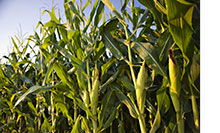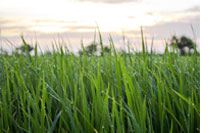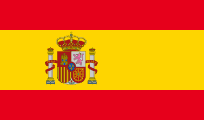SPFH Silage applications
 Corn Harvest
Corn Harvest
Corn silage is a popular forage because it is high in energy and digestibility and is easily adapted to mechanization from the stand-crop to time of feeding. Corn silage is used on many dairy farms and on some beef cattle farms around the world.
*Video from Agri957
 Grass Harvest
Grass Harvest
Grass silage may be the most versiatile crop to forage that is available. Grass silage is usually grown on the more favorable fields with different varieties that are capable of producing quantity and quality.
*Video from AgrarBlick
 Alfalfa Harvest
Alfalfa Harvest
Alfalfa has a high palatability, very high protein levels and can handle very well a harsh winter and a dry summer. Alfalfa silage preserves more nutrients than Grass silage. Alfalfa needs to be grown on well-drained soils that have high fertility and Ph levels.
*Video from Tractorspotter
 Sorghum Harvest
Sorghum Harvest
Sorghum is a tropical plant that is known to be a good alternative to corn in regions with scare rainfall, sorghum can produce a given unit of Dry Matter with a low water requirement.
*Video from Robin ter Maat
 Tropical Grass Harvest
Tropical Grass Harvest
Tropical grasses have greater light and temperature requirements than cool-season grasses. On the other hand, they tend to have lower moisture requirements. Grasses begin to lose sugars soon after they are mowed, and sugars are the substrate for microbial fermentation. The key to high-quality hay crop silage is to dry the crop at the proper Dry Matter level for ensiling as quickly as possible.
*Video from Linda Liu
 Sugarcane Harvest
Sugarcane Harvest
It is generally known to be a major byproduct of the sugarcane industry which is left in the field after cane harvest. However the way sugarcane (top has been removed) is harvest,results in important variations in the composition - especially for neutral detergent solubles or nitrogen-free extractives.
*Video from Riley Steindl
 Sugarcane Trash Harvest
Sugarcane Trash Harvest
It is generally known to be a major byproduct of the sugarcane industry which is left in the field after cane harvest. However the way sugarcane (top has been removed) is harvest,results in important variations in the composition - especially for neutral detergent solubles or nitrogen-free extractives.
*Video from Joe Goemaat
 Wood Harvest
Wood Harvest
Biomass for biofuels, bioproducts and bioenergy can be sourced from forests, agricultural crops, various residue streams, and dedicated woody or herbaceous crops. Short rotation woody crops , like willow and hybrid poplar, are perennial cropping systems that produce a number of environmental and economic development benefits in addition to being a renewable source of biomass that can be produced on marginal land.
*Video from biomasssupplysystems
 Oat Harvest
Oat Harvest
Oat yields more silage or green forage per hectare than any other cereal crop, especially when fertilized with nitrogen. Oats can provide one of the best low-cost emergency forages after drought if timely rainfall is received for germination and growth
*Video from Sonne Farms
 RYE Harvest
RYE Harvest
Rye can be used as a cover crop after corn silage to protect against soil erosion. Properly managed, it has multiple uses and benefits beyond conservation, including forage production, nutrient management and weed suppression.
*Video from Mike van den Hardenberg
 PEA Harvest
PEA Harvest
Peas are one of the four most important legume crops next to soybean, groundnut and beans. They are a particularly important legume grain in temperate areas with numerous food (dry seed, vegetable) and feed (seed, fodder) usages . As a forage, peas are a high-yielding, short-term crop with a high protein content.
*Video from Czech Agri Videos HD
 Wheat Harvest
Wheat Harvest
Wheat silage as a feed for dairy cows has become popular recently. Wheat can provide a fall cover crop and/or fall pasture; it can be grazed in the fall with little effect upon grain or forage yield the following spring.
*Video from Jim Baltz
 Barley Harvest
Barley Harvest
Barley is a major cereal crop primarily grown for its grain, but it also yields valuable forage that can be grazed, cut for hay or silage while still green, or cut after grain harvest as straw. The use of barley forage for feeding purposes is “relatively” new. Barley can be a valuable forage during drought periods, or when the barley crop has suffered frost damage that has hindered grain crop.
*Video from Balmesh




 Am Machinery
Am Machinery 



 Alfalfa Harvest
Alfalfa Harvest Sorghum Harvest
Sorghum Harvest Tropical Grass Harvest
Tropical Grass Harvest Sugarcane Harvest
Sugarcane Harvest Sugarcane Trash Harvest
Sugarcane Trash Harvest Wood Harvest
Wood Harvest Oat Harvest
Oat Harvest RYE Harvest
RYE Harvest PEA Harvest
PEA Harvest Wheat Harvest
Wheat Harvest Barley Harvest
Barley Harvest
Validate your login
Sign In
Create Account